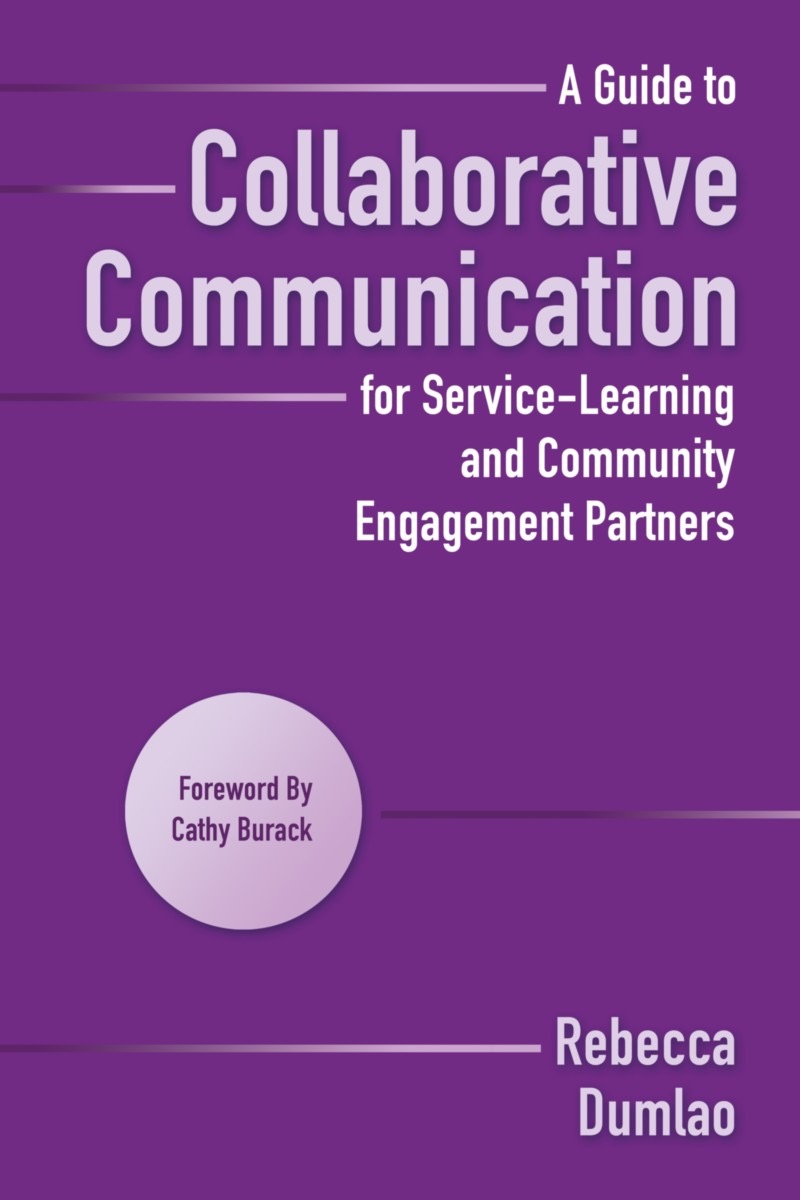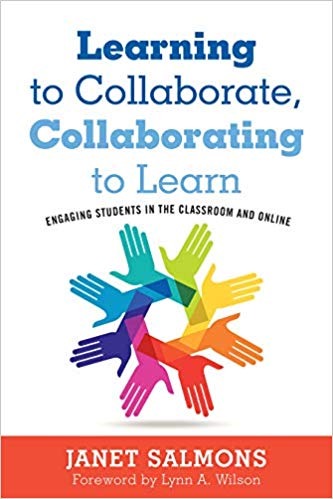collaboration
Select an item by clicking its checkbox
Reviewed by: Steven Ibbotson, Prairie Colleges
Date Reviewed: June 17, 2021
Date Reviewed: June 17, 2021
The Power of Partnership celebrates the nuance and depth of student-faculty partnerships in higher education and illustrates the many ways that partnership—the equitable collaboration among students, staff, and faculty in support of teaching and learning—has the potential to transform lives and institutions.
The book aims to break the mold of traditional and power-laden academic writing by showcasing creative genres such as reflection, poetry, dialogue, illustration, and ...
The book aims to break the mold of traditional and power-laden academic writing by showcasing creative genres such as reflection, poetry, dialogue, illustration, and ...
The Power of Partnership celebrates the nuance and depth of student-faculty partnerships in higher education and illustrates the many ways that partnership—the equitable collaboration among students, staff, and faculty in support of teaching and learning—has the potential to transform lives and institutions.
The book aims to break the mold of traditional and power-laden academic writing by showcasing creative genres such as reflection, poetry, dialogue, illustration, and essay. The collection has invited chapters from renowned scholars in the field alongside new student and staff voices, and it reflects and embodies a wide range of student-staff partnership perspectives from different roles, identities, cultures, countries, and institutions. (From the Publisher)
The book aims to break the mold of traditional and power-laden academic writing by showcasing creative genres such as reflection, poetry, dialogue, illustration, and essay. The collection has invited chapters from renowned scholars in the field alongside new student and staff voices, and it reflects and embodies a wide range of student-staff partnership perspectives from different roles, identities, cultures, countries, and institutions. (From the Publisher)
Reviewed by: AHyun Lee, Garrett Evangelical Theological Seminary
Date Reviewed: June 17, 2021
Date Reviewed: June 17, 2021
This book focuses on partnerships at the most basic level of interaction – between two people as they work toward common goals. Interpersonal dynamics described in this book are intended to guide formal and institutional relationships between members of a community or community organization on the one hand and representatives from campus on the other. Collaborative communication principles and practices shared can form a foundation for individuals to build flexible, lasting ...
This book focuses on partnerships at the most basic level of interaction – between two people as they work toward common goals. Interpersonal dynamics described in this book are intended to guide formal and institutional relationships between members of a community or community organization on the one hand and representatives from campus on the other. Collaborative communication principles and practices shared can form a foundation for individuals to build flexible, lasting relationships that will weather most challenges and sustain the larger partnerships of their respective organizations.
This book offers a conceptual framework of collaborative communication to build and sustain partnerships, recognizing that relationships change over time as the people involved and their circumstances evolve. Collaborative communication uses a repertoire of knowledge and skills that allow partners to make choices that fit their situation or context and to work through differences and challenges as they occur, to include managing conflict and navigating cultural differences. It further takes into account the different means of communication, whether face-to-face, using e-mail, text messaging, or social media. Readers will appreciate the numerous real world examples that illustrate and bring its key concepts to life.
This book is addressed to partners at all levels focused on community engagement and service-learning. It is intended for preparing college students to work more effectively in the community, as well as for workshops for community and campus members who work with service-learning students. It can equally be used in leadership workshops in academic and community settings. Scholars, students, or community members involved in community engaged research will also find useable ideas for their work.
The appendices offer an annotated bibliography of useful resources and provide readers with a repertoire of activities for building a collaborative communication repertoire. (From the Publisher)
This book offers a conceptual framework of collaborative communication to build and sustain partnerships, recognizing that relationships change over time as the people involved and their circumstances evolve. Collaborative communication uses a repertoire of knowledge and skills that allow partners to make choices that fit their situation or context and to work through differences and challenges as they occur, to include managing conflict and navigating cultural differences. It further takes into account the different means of communication, whether face-to-face, using e-mail, text messaging, or social media. Readers will appreciate the numerous real world examples that illustrate and bring its key concepts to life.
This book is addressed to partners at all levels focused on community engagement and service-learning. It is intended for preparing college students to work more effectively in the community, as well as for workshops for community and campus members who work with service-learning students. It can equally be used in leadership workshops in academic and community settings. Scholars, students, or community members involved in community engaged research will also find useable ideas for their work.
The appendices offer an annotated bibliography of useful resources and provide readers with a repertoire of activities for building a collaborative communication repertoire. (From the Publisher)
Reviewed by: Beverley McGuire, University of North Carolina Wilmington
Date Reviewed: June 21, 2021
Date Reviewed: June 21, 2021
Students who know how to collaborate successfully in the classroom will be better prepared for professional success in a world where we are expected to work well with others. Students learn collaboratively, and acquire the skills needed to organize and complete collaborative work, when they participate in thoughtfully-designed learning activities.
Learning to Collaborate, Collaborating to Learn uses the author’s Taxonomy of Online Collaboration to illustrate levels of ...
Learning to Collaborate, Collaborating to Learn uses the author’s Taxonomy of Online Collaboration to illustrate levels of ...
Students who know how to collaborate successfully in the classroom will be better prepared for professional success in a world where we are expected to work well with others. Students learn collaboratively, and acquire the skills needed to organize and complete collaborative work, when they participate in thoughtfully-designed learning activities.
Learning to Collaborate, Collaborating to Learn uses the author’s Taxonomy of Online Collaboration to illustrate levels of progressively more complex and integrated collaborative activities.
- Part I introduces the Taxonomy of Online Collaboration and offers theoretical and research foundations.
- Part II focuses on ways to use Taxonomy of Online Collaboration, including, clarifying roles and developing trust, communicating effectively, organizing project tasks and systems.
- Part III offers ways to design collaborative learning activities, assignments or projects, and ways to fairly assess participants’ performance. Learning to Collaborate, Collaborating to Learn is a professional guide intended for faculty, curriculum planners, or instructional designers who want to design, teach, facilitate, and assess collaborative learning. The book covers the use of information and communication technology tools by collaborative partners who may or may not be co-located. As such, the book will be appropriate for all-online, blended learning, or conventional classrooms that infuse technology instructional techniques. (From the Publisher)
Learning to Collaborate, Collaborating to Learn uses the author’s Taxonomy of Online Collaboration to illustrate levels of progressively more complex and integrated collaborative activities.
- Part I introduces the Taxonomy of Online Collaboration and offers theoretical and research foundations.
- Part II focuses on ways to use Taxonomy of Online Collaboration, including, clarifying roles and developing trust, communicating effectively, organizing project tasks and systems.
- Part III offers ways to design collaborative learning activities, assignments or projects, and ways to fairly assess participants’ performance. Learning to Collaborate, Collaborating to Learn is a professional guide intended for faculty, curriculum planners, or instructional designers who want to design, teach, facilitate, and assess collaborative learning. The book covers the use of information and communication technology tools by collaborative partners who may or may not be co-located. As such, the book will be appropriate for all-online, blended learning, or conventional classrooms that infuse technology instructional techniques. (From the Publisher)


